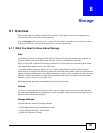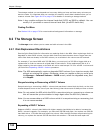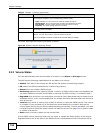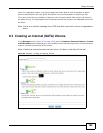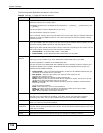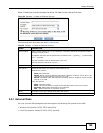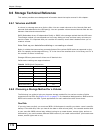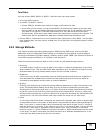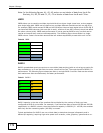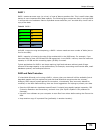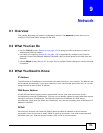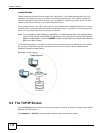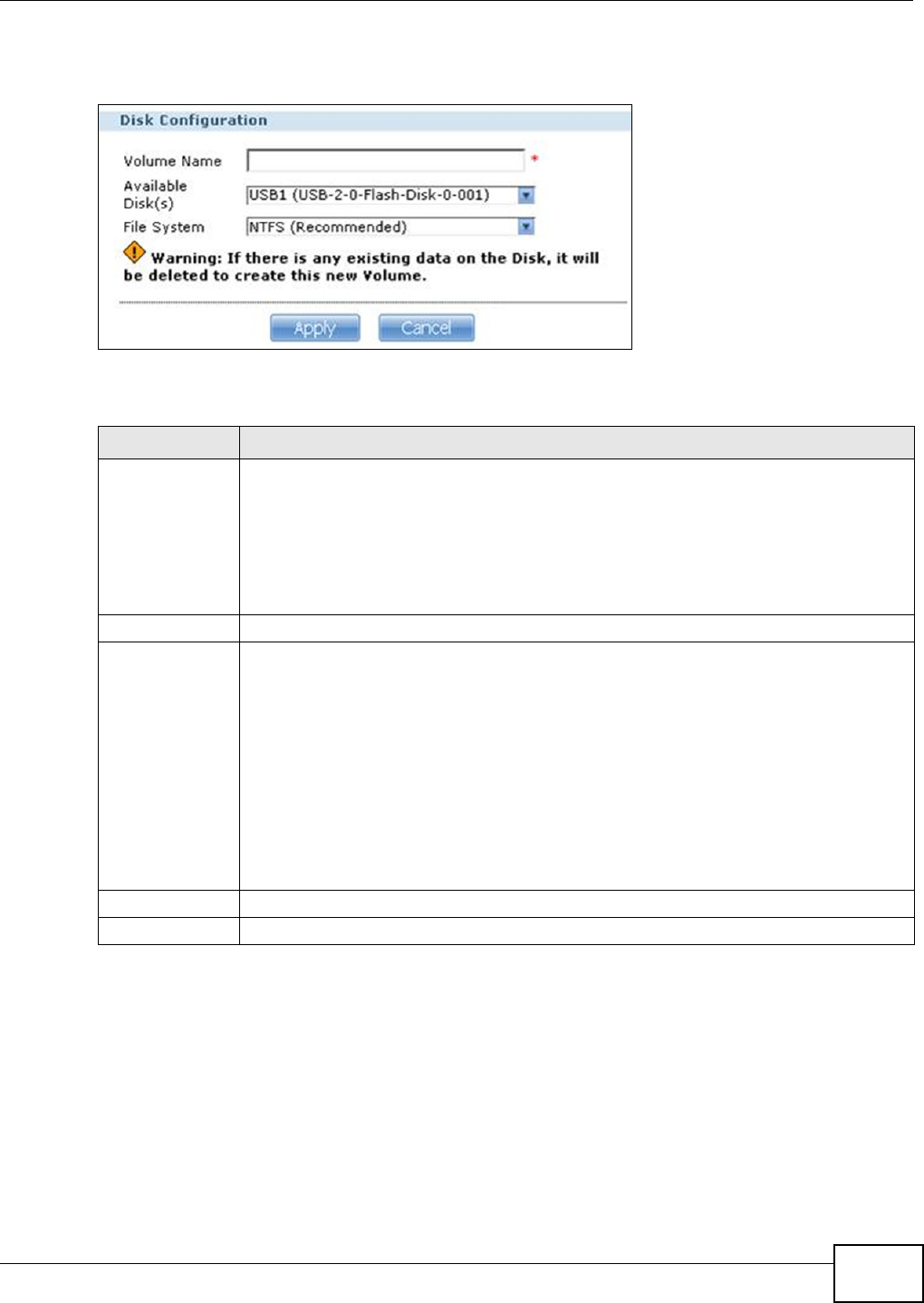
Chapter 8 Storage
Media Server User’s Guide
169
Note: Creating a volume formats the drive. All data on the disk will be lost.
Figure 92 Storage > Create an External Volume
The following table describes the labels in this screen.
8.5.1 External Disks
You may connect USB storage devices that support the following file systems to the NSA.
• Windows File Systems: NTFS, FAT32 and FAT16.
• Linux File Systems: ReiserFS, EXT2, EXT3, and XFS.
Table 28 Storage > Create an External Volume
LABEL DESCRIPTION
Volume Name Type a volume name from 1 to 31 characters. The name cannot be the same as another
existing external volume.
Acceptable characters are all alphanumeric characters and " " [spaces], "_" [underscores],
and "." [periods].
The first character must be alphanumeric (A-Z 0-9).
The last character cannot be a space " ".
Available Disk(s) Select the external (USB) device upon which you want to create the volume.
File System Select the file system you want the new volume to use.
Windows file systems
NTFS: Recommended.
FAT32: Newer, and more efficient than FAT16. Supports a volume size of up to 2 TB
(Tera Bytes) and individual file sizes of up to 4 GB.
FAT16: Compatible with older Windows operating systems. Supports volume and file
sizes of up to 2 GB.
Linux file systems
EXT2: Older file system.
EXT3: The same as EXT2, but adds a journaled file system and is more robust.
ReiserFS: Offers better performance for small files.
XFS: Allows expansion for mounted volumes.
Apply Click this to save your changes and create the volume.
Cancel Click this to exit this screen without saving changes.



